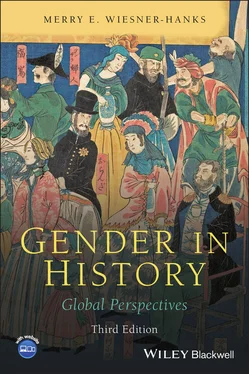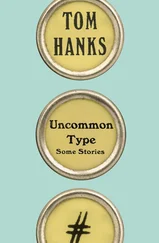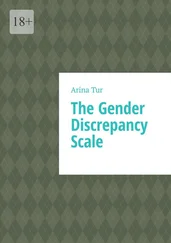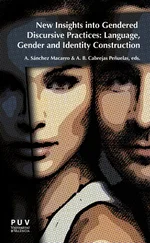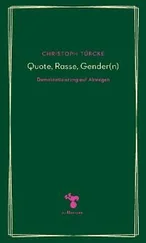The arbitrary and culturally produced nature of gender has been challenged by transgender as well as intersex individuals. Transgender, or simply “trans,” is an umbrella term for people whose gender identity differs from the sex they are assigned at birth. “Transsexual” is often used for those transgender people who decide to transition to the gender with which they identify through sex reassignment surgery, now often called gender confirmation surgery, which has been available since the 1950s. (In this, the word “sex” refers to the physical aspects of a sexed body, not sexual orientation, as being transgender is not related to sexual orientation.) Transgender individuals may also understand themselves to be a third gender that is neither male nor female, both male and female, moving between male and female, or in some other way outside a dichotomous gender system. Because in English and many other languages pronouns are gendered, new pronouns have been developed. These have included “ze” and “hir,” and since 2010 the singular “they” has become increasingly common, chosen by people whose gender identity is nonbinary or by those who don’t want to go by pronouns with a traditional gender association.
Over the past several decades, the trans rights movement has advocated worldwide for legal recognition and other rights. Both activists and scholars often linked gender and sexual categories into an ever-lengthening list, which settled in the 2010s into LGBTQ (lesbian, gay, bisexual, trans, queer) or LGBTQ+, with the “+” representing all other possible categories.
As has been true with the women’s and gay-rights movements, people involved in the trans movement also study people in the past they identify as sharing their experiences, as do scholars interested in gender and sexuality more broadly. Some use gender-neutral pronouns when a historic figure engages in actions that suggest they saw themselves as somehow outside the gender binary or whose gender identity changed over their life.
Finding individuals who were outside a dichotomous gender system has not been difficult, as many of the world’s cultures have a third or even a fourth and fifth gender, often with specialized religious or ceremonial roles. In some cultures, gender is determined by one’s relationship to reproduction, so that adults are gendered male and female, but children and old people are regarded as different genders; in such cultures there are thus four genders, with linguistic, clothing, and behavioral distinctions for each one. In a number of areas throughout the world, including Alaska, the Amazon region, North America, Australia, Siberia, Central and South Asia, Oceania, and the Sudan, individuals who were originally viewed as male or female assume (or assumed, for in many areas such practices have ended) the gender identity of the other sex or combine the tasks, behavior, and clothing of men and women. Some of these individuals are intersex and occasionally they are eunuchs (castrated males), but more commonly they are morphologically male or female. For them, gender attribution is not based on genitals, and may change throughout their life. The best known of these third-gender individuals are found among several Native American peoples, and the Europeans who first encountered them regarded them as homosexuals and called them “berdaches,” from an Arabic word for male prostitute. Now most scholars and the individuals themselves choose to use the term “two-spirit people,” and note that they are distinguished from other men or women by their work or religious roles than by their sexual activities; they are usually thought of as a third gender rather than effeminate males or masculine women. (For more on two-spirit people in the Americas, see the section “Religious Traditions Transmitted Orally” in Chapter 6.)
Both historical and contemporary examples of third (or fourth or fifth) genders and categories of sexual orientation are receiving a great deal of study today, and are often used by people within the LGBTQ+ community to demonstrate both the extent of nondichotomous understandings and the socially constructed and historically variable nature of all notions of gender and sexual difference. In some areas, there has been a blending of older third gender categories and more recent forms of expressing LGBTQ+ identity, as contemporary groups assert their connections with older traditions within their own culture. For example, beginning in the 1990s, two-spirit societies were formed throughout much of the United States and Canada, and in the early 2000s, the Asian and Pacific Islander LGBT student organization at the University of California at Los Angeles chose the name “Mahu” for their group, in reference to the traditional Polynesian third gender category.
Thus for a number of reasons, the border between “biological” sex and “cultural” gender carefully created by gender scholarship in the 1980s had by several decades later become increasingly permeable, unstable, and murky, and has remained so. The same has been true for the boundaries between the physical body and cultural forces on the issue of sexual orientation and other aspects of sexuality. Some scientists have attempted to find a “gay gene,” while others see this as a futile search for something that is completely socially constructed. And some condemn all such research as efforts to legitimize an immoral “lifestyle choice.” The complexities of gender and sexuality are threatening to some, but research in many disciplines continues to provide evidence for them.
Difference and Intersectionality
Historians of women were key voices in debates about the distinction between gender and sex and about categories of sexual and gender identity. They also put increasing emphasis on differences among women, noting that women’s experiences differed because of class, race, nationality, ethnicity, religion, and other factors, and they varied over time. Because of these differences, some wondered, did it make sense to talk about “women” at all? If, for example, women were thought to be delicate guardians of the home, as was true in the nineteenth-century United States, then were Black women, who worked in fields alongside men, really “women”? If women were thought to be inferior and irrational (as they were in many cultures) then was Queen Elizabeth I of England a “woman”? Was “woman” a valid category, the meaning of which is self-evident and unchanging over time, or is arguing for any biological base for gender difference naïve “essentialism”? These historians noted that not only in the present is gender “performative,” that is, a role that can be taken on or changed at will, but it was so at many points in the past, as individuals “did gender” and conformed to or challenged gender roles. Thus it is misguided to think that we are studying women (or men, for that matter) as a sex, they argued, for the only thing that is in the historical record is gender. In the 2000s, some scholars and activists advocated using “woman-identified” or “female-identified” instead of “woman,” as these seemed to better include trans women. (“Woman-identified” had a different meaning in the 1970s, when early feminists used it to mean women who did not look to men for affirmation.) Patriarchy largely disappeared as an analytical framework as well, as it, too, seemed essentialist and falsely universalizing.
Recognizing difference was not enough, asserted some scholars, who stressed that these categories were not simply matters of identity, but also oppression. They noted that feminist scholarship had sometimes taken the experiences of heterosexual white women as normative, and argued that the experiences of women of color must be recognized as distinctive. The nature of oppression is multiplicative rather than additive, and no one identity – race, class, gender, religion, ability, sexual orientation, and so on – should be considered apart from other identities, but is always materialized in terms of and by means of them. The idea that multiple forms of oppression interact and combine was part of the thinking of feminist groups that emerged in the 1960s and 1970s, which is not surprising, as so many founders of women’s liberation had been active in the civil rights and anti-Vietnam War movements, the latter both anti-racist and anti-imperialist. Socialist feminists expanded Marxist analysis of labor exploitation in production to examine paid and unpaid household labor, through which working-class as well as wealthier men benefited from the unpaid work of their female family members. In addition, prosperous women benefited when they could hire poorer women – usually women of color and foreign born – for child care and housecleaning.
Читать дальше
